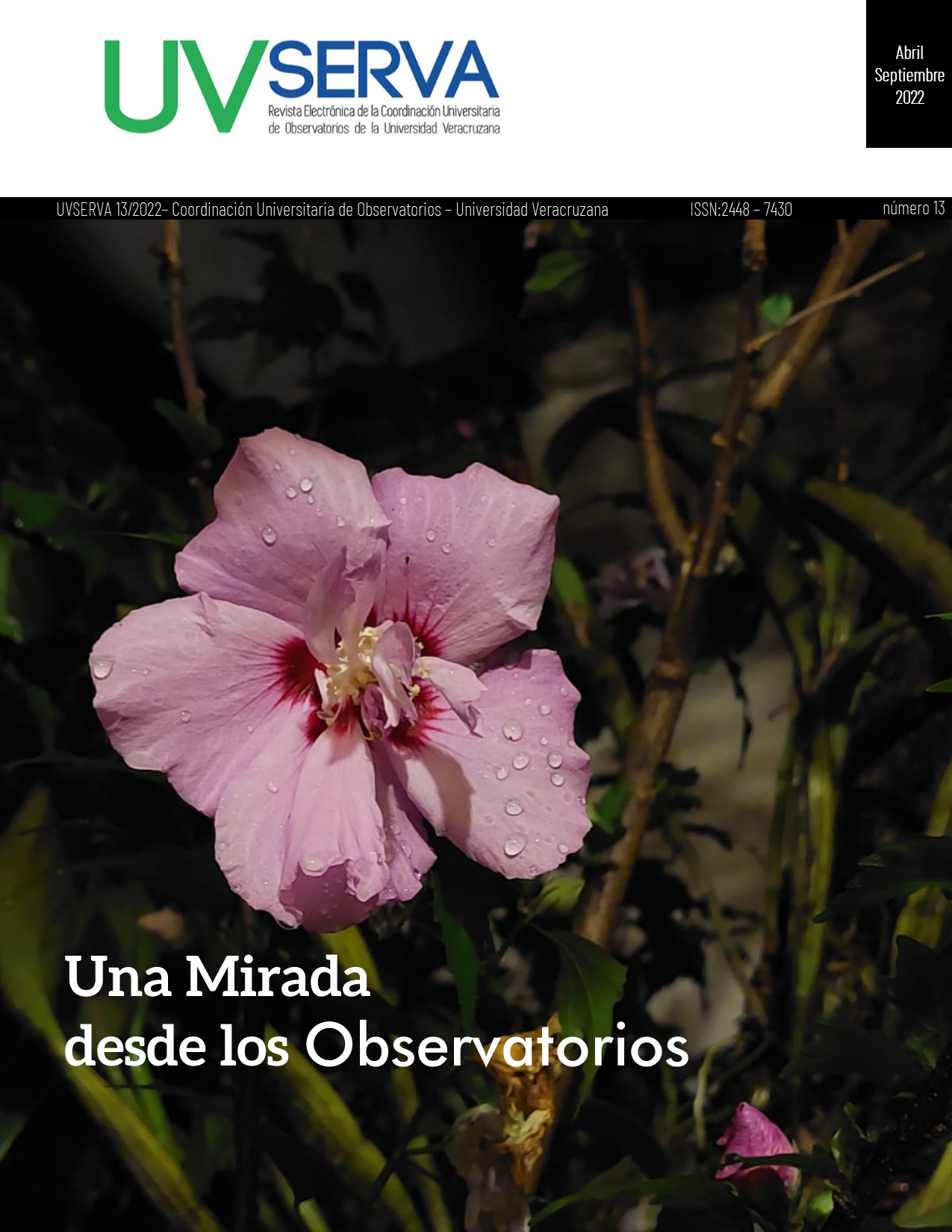Abstract
Coffee is one of the most commercialized products in Mexico and the world. In recent years, the coffee market has suffered great economic losses due to the presence of coffee rust, whose causal agent is the fungus Hemileia vastatrix. The use of fungicides is the most widely used control method. However, all these contribute to environmental pollution and generate adverse effects on humans. Therefore, it is necessary to find alternatives to eradicate or mitigate the incidence of coffee rust. In this work, the fungicidal activity of Azadiracta indica extracts against Hemileia vastatrix spores was evaluated in the search for an alternative to control coffee rust. Additionally, four compounds of Azadiracta indica were isolated, trilinolein, stigmasterol, stigmasterol glycoside and azadirachtin A, which could not be evaluated due to the small amount obtained.
References
Abdel, H.M., Abdel, M.I.A. & Hamida, S. (1982). Selective effects of two systemic fungicides on soil fungi. Mycopathologia, 79(2), 93-99. https://doi.org/10.1007/BF00468085
Alemany, L.B. (2002). Using simple 13C NMR linewidth and relaxation measurements to make detailed chemical shift assignments in triacylglycerols and related compounds. Chemistry and Physics of Lipids, 120(1-2), 33-44. https://doi.org/10.1016/S0009-3084(02)00100-7
Alkhulaifi, M.M., Awaad, A.S., AL-Mudhayyif H.A., Alothman M.R., Alqasoumi S.I. & Zain S.M. (2019). Evaluation of antimicrobial activity of secondary metabolites of fungi isolated from Sultanate Oman soil. Saudi Pharmaceutical Journal, 27(3), 401-405. https://doi.org/10.1016/j.jsps.2018.12.009
Amina, M., Alarfaj, N.A., El-Tohamy, M.F., Al Musayeib N.M. & Oraby H.F. (2018) Sequential injection-chemiluminescence evaluation of stigmasterol glucoside and luteolin via green synthesis of silver nanoparticles using biomass of plectranthus asirensis, Green Chemistry Letters and Reviews, 11(4), 523-533. https://doi.org/10.1080/17518253.2018.1543457
Avelino, J. & Rivas, G. (2013). La roya anaranjada del cafeto. https://hal.archives-ouvertes.fr/hal-01071036/document
Borges, R., Ciavarelli, G., Perina, F. & Alves, E. (2012) Essential oils for rust control on coffee plants. Ciência e Agrotecnologia, 36, 16-24. https://doi.org/10.1590/S1413-70542012000100002
Chandrashekara, K.T., Prakash, B.M., Mahesha, K.S. & Rajashekar N. (2012). Antifungal activity of plant extracts against leaf rust disease of mulberry, 3(1), 60-63. https://www.researchgate.net/profile/Prakash-M/publication/235920409_ANTIFUNGAL_ACTIVITY_OF_PLANT_EXTRACTS_AGAINST_LEAF_RUST_DISEASE_OF_MULBERRY/links/0fcfd5142fd10d72c0000000/ANTIFUNGAL-ACTIVITY-OF-PLANT-EXTRACTS-AGAINST-LEAF-RUST-DISEASE-OF-MULBERRY.pdf
Ćirić, A., Karioti, A., Glamočlija, J., Soković, M. & Skaltsa, H. (2011) Antimicrobial activity of secondary metabolites isolated from Centaurea spruneri Boiss. & Heldr. The Journal of the Serbian Chemical Society, 76 (1), 27-34. https://doi.org/10.2298/JSC100127008C
Clarke, R.J. & Macrae, R. (1985). Coffee. Volume 1: Chemistry. ISBN: 978-94-010-8693-6. EUA: ELSEVIER.
Comité Estatal de Sanidad Vegetal de Veracruz (CESVVER). (2018). Roya del cafeto (Hemileia vastatrix). http://cesvver.org.mx/roya-del-cafe-hemileia-vastatrix/
Dos Santos, J.M.F., De Oliveira, S.H.F., Domingues, R.J. & Guzzo, S.D. (2002). Avaliação da eficácia de fungicidas sistêmicos no controle da ferrugem (Hemileia vastatrix L.) do cafeeiro, sob chuva simulada. Arquivos do Instituto Biológico, 69 (1), 45-49. http://www.biologico.agricultura.sp.gov.br/uploads/docs/arq/V69_1/santos.pdf
Jiang, G., Lin, S., Wen, L., Jiang, Y., Zhao, M., Chen, F., Prasad, K.N., Duan, X. & Yang, B. (2013). Identification of a novel phenolic compound in litchi (Litchi chinensis Sonn.) pericarp and bioactivity evaluation. Food Chemistry, 136(2), 563-8. https://doi.org/10.1016/j.foodchem.2012.08.089
Kabata, A. & Mukherjee, A.B. (2007). Trace elements from soil to human. Nueva York: Springer Berlin Heidelbegr New York.
Krug, C.A., Mendes, J.E.T. & Carvalho, A. (1939) Taxonomia de Coffea arabica L. Bol Tec no 62. Instituto Agronomico de Estado, Campinas, Brazil.
Kupchan, S.M., Tsou, G. & Sigel, C.W. (1973). Datiscacin, a novel cytotoxic cucurbitacin 20-acetate from Datisca glomerata. Journal of Organic Chemistry 38(7), 1420-1421. http://dx.doi.org/pubs.acs.org/doi/pdf/10.1021/jo00947a041
Migliorini, P. & Wezel, A. (2017). Converging and diverging principles and practices of agriculture regulations and agroecology. A review. Agronomy for Sustainable Development, 37(1), 1-18. https://doi.org/10.1007/s13593-017-0472-4
Newman, D.J. & Cragg, G.M. (2020) Natural Products as Sources of New Drugs over the Nearly Four Decades from 01/1981 to 09/2019. Journal of Natural Products, 83(3), 770-803. https://doi.org/10.1021/acs.jnatprod.9b01285
Organización Mundial de la Salud. (2006). Guías para la calidad del agua potable (3ra Edición). Suiza: Ediciones de la Organización Mundial de la Salud. https://www.who.int/water_sanitation_health/dwq/gdwq3_es_fulll_lowsres.pdf
Rayner, R.W. (1961). Germination and penetration studies on coffee rust (Hemileia vastatrix B. & Br.). Annals of Applied Biology, 49(3), 497-505. https://doi.org/10.1111/j.1744-7348.1961.tb03641.x
Ringuelet, J. & Viña, S. (2013). Productos naturales vegetales. Buenos Aires, Argentina: Editorial de la Universidad de La Plata.
Salam, A.K. & Helmke, P.A. (1998). The pH dependence of free ionic activities and total dissolved concentrations of copper and cadmium in soil solution. Geoderma, 83(1), 281-291. https://doi.org/10.1016/S0016-7061(98)00004-4
Takhi, D., Ouinten, M. & Yousfi, M. (2011) Study of antimicrobial activity of secondary metabolites extracted from spontaneous plants from the area of Laghouat, Algeria. Advances in Environmental Biology, 469-77. https://link.gale.com/apps/doc/A253057803/AONE?u=anon~f8c554f&sid=googleScholar&xid=94283d21
Temis A., López A. & Sosa M. (2011). Producción de café (Coffea arabica L.): cultivo, beneficio, plagas y enfermedades. Temas Selectos de Ingeniería de Alimentos, 5(2), 54-74. file:///C:/Users/FRANCEN/AppData/Local/Temp/TSIA-Vol5No2-Temis_Perez_et_al_54-74p.pdf

This work is licensed under a Creative Commons Attribution-NonCommercial 4.0 International License.
Copyright (c) 2022 Mtro. Omar Bravo-Ruiz, Dr. Lázaro Rafael Sánchez Velásquez, Dr. Enrique Alarcón-Gutiérrez, Francisco Cen Pacheco

